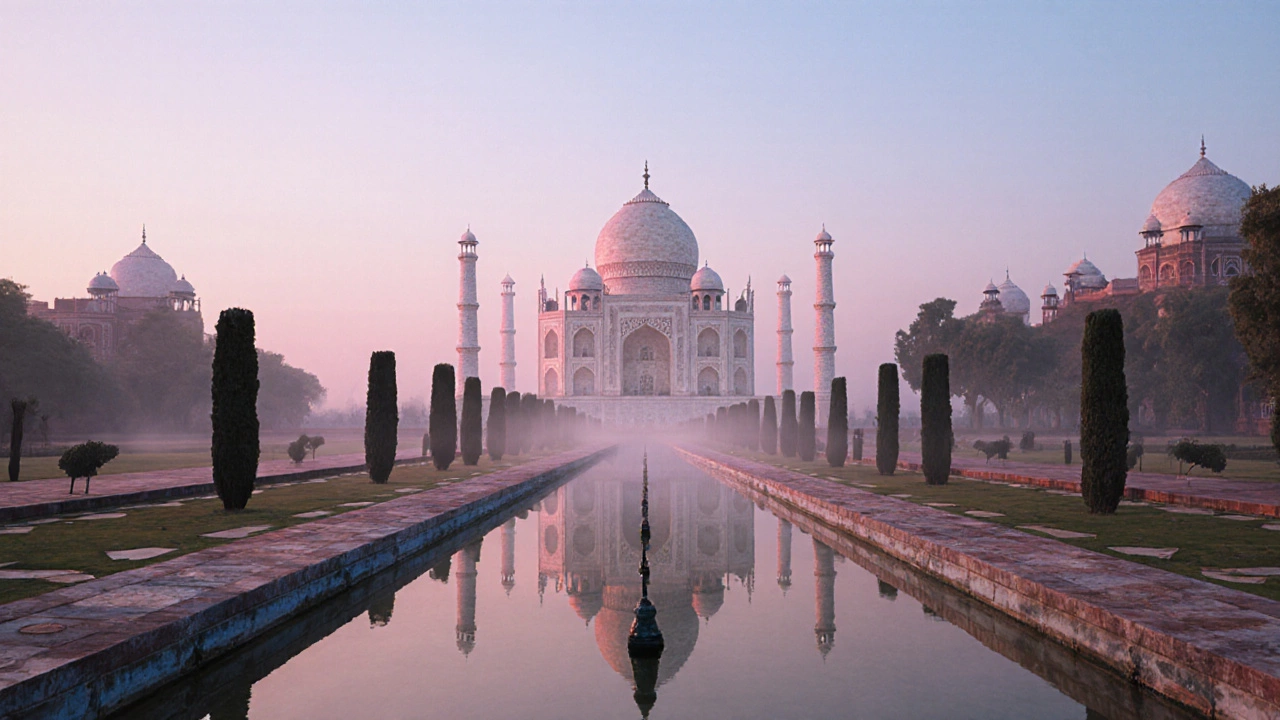Amber Palace: History, Architecture, and Why It’s a Must-See in India
When you think of Amber Palace, a massive 16th-century fort-palace built by the Kachwaha Rajputs in Rajasthan, known for its blend of Hindu and Mughal architecture and its location just outside Jaipur. Also known as Amer Fort, it’s not just a relic—it’s a living piece of India’s royal past that still draws millions every year. Unlike many old forts that feel empty and distant, Amber Palace feels alive. Walk through its courtyards, and you can almost hear the echo of elephant processions, the clink of royal jewelry, and the murmur of courtiers debating politics under shaded arches.
The palace isn’t just one building—it’s a whole hillside complex. The main structure sits atop a hill, connected to the lower town by a winding road once traveled by elephants. Inside, you’ll find the Sheesh Mahal, the Mirror Palace, famous for its tiny glass pieces that reflect candlelight like stars, the Diwan-i-Aam where public audiences were held, and the Ganesh Pol gate that leads to the private royal quarters. The architecture mixes Rajput strength with Mughal elegance—think carved jharokhas, marble inlays, and frescoes that still hold their color after 400 years.
What makes Amber Palace different from the Taj Mahal, a monument built for love in Agra, famous for its white marble and symmetry, or the Red Fort, a military stronghold in Delhi with austere red sandstone walls? Amber Palace was a royal residence, not just a tomb or a seat of government. It was designed for comfort, celebration, and daily life. The palace had cooling systems, hidden passages, and even a water channel that brought fresh water from the nearby lake. It’s a place where royalty didn’t just rule—they lived, danced, and relaxed.
Today, visitors come for the light-and-sound show, the elephant rides up the hill, and the quiet corners where you can sit and stare at the view of Maota Lake. But the real magic is in the details—the way the sunlight hits the mirror walls at noon, the carved elephants guarding the staircases, the silence in the zenana quarters where queens once lived. It’s not just a tourist spot. It’s a story told in stone, glass, and history.
Whether you’re planning a trip to Rajasthan, comparing heritage sites in India, or just curious about how royal families lived, Amber Palace gives you more than photos—it gives you a sense of time. Below, you’ll find real traveler insights, hidden tips, and comparisons with other Indian palaces that help you understand why this place isn’t just on the map—it’s on the mind of everyone who visits.
- Nov, 1 2025
- 0 Comments
The Taj Mahal stands as India's most beautiful historical place-not just for its marble grandeur, but for the deep love story behind it. A masterpiece of emotion, symmetry, and craftsmanship, it draws millions each year to witness its quiet, timeless beauty.
More